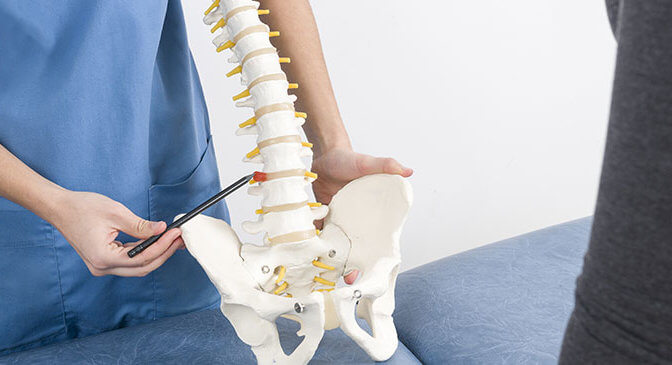Written by Weijia Xu, pht.
Between 60% and 80% of people will experience low back pain at some point their lives. Some will have low back pain and leg pain caused by a herniated disk.
Although a herniated disk can be very painful, and feels like it’s the end of the world, most people (70-90%) feel much better with just a few weeks or months of physical therapy treatment. The earlier you start treatment, the better.
Here is what you should know about this condition:
A herniated disk can occur anywhere along the spine, but most commonly occurs in the lower back. It is sometimes called a bulging, protruding, or ruptured disk, they sound really catastrophic but it is one of the most common causes of lower back pain, as well as leg pain or “sciatica.”
It happens often after lifting, turning, bending forward movements or after a prolong period of sitting. The soft, jelly-like center of the disk can push all the way through the outer ring, causing inflammation. If the nerve gets inflamed or if the bulge is too big and compresses de nerves that goes to the leg, it will cause leg pain or sciatica.
What are the treatment options?
1 – REST
One to 2 days of bed rest will usually help relieve back and leg pain. Do not stay off your feet too long, resume activity when you can and try to do the following:
- Take rest breaks throughout the day, avoid sitting for long periods.
- Make all your physical activity slow and controlled, especially bending forward and lifting.
- Change your daily activities to avoid movements that can cause further pain, especially leg pain.
- Ask your doctor for medications to relieve pain, usually Nonsteroidal anti-inflammatory medications (NSAIDs).
2 – Get evaluated by a physical therapist
Specific directional exercises and manual technics should be given to help relieve your leg pain first then your back pain. Later on, make sure to go through strengthening and stretching exercises to prevent reoccurrence.
3 – Epidural steroid injection
When the correct conservative treatment with physio is not helping or the pain is too intense to progress through your exercises and treatment after 8 weeks, an injection can help relieve pain and inflammation effectively but temporarily.
You can still continue your physio treatments after to progress through your rehab and prevent reoccurrence.
4 – Surgical management
A last resort option for a small percentage of patients where a surgery is recommended for the following symptoms:
- Weakness in legs
- Difficulty walking
- Loss of bladder and bowel function
In any case, if you are not sure what treatment is best for you, a well-trained physiotherapist at our clinic can tell you what to do after his/her evaluation.
Don’t live in pain anymore! Click here to ask for an appointment!
Sources https://orthoinfo.aaos.org/en/diseases–conditions/herniated-disk-in-the-lower-back/



Recent Comments